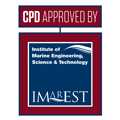Call for Abstract
Scientific Program
International Conference on Aquaculture & Fisheries, will be organized around the theme “Advancing & Expanding Aquaculture Sector Focused on Developmental, Toxicological and Transgenic Scientific Research”
Aquaculture-2015 is comprised of 14 tracks and 97 sessions designed to offer comprehensive sessions that address current issues in Aquaculture-2015.
Submit your abstract to any of the mentioned tracks. All related abstracts are accepted.
Register now for the conference by choosing an appropriate package suitable to you.
- Track 1-1Fish farming techniques & approaches
- Track 1-2Crustaceans farming techniques
- Track 1-3Oyster farming techniques
- Track 1-4Algaculture
- Track 1-5Aquaponics
- Track 1-6Integrated multi trophic aquaculture
- Track 1-7Induced breeding techniques
- Track 1-8Open ocean aquaculture and deep sea aquaculture
- Track 2-1Ecological flow management & fish habitat
- Track 2-2Ecological effects on terrestrial & aquatic communities
- Track 2-3Pelagic energy pathways
- Track 2-4Fish community structure & function in two habitat gradient
- Track 2-5Stream fish ecology
- Track 2-6Principles of linking fish habitat
- Track 2-7Catchment scale environment management in fish conservation
- Track 2-8Conservation of endangered species
- Track 2-9Conservation biology of fishes
- Track 2-10Ethnoichthyology & native fish conservation
- Track 2-11Captive breeding
- Track 2-12Impact of climate change on the oceans and its effect on marine living resources
- Track 3-1Biological diversity of aquatic species
- Track 3-2Comparative abilities of vegetative regeneration of aquatic plants
- Track 3-3Sensory biology of aquatic animals
- Track 3-4Mechanism of force generation in aquatic locomotion
- Track 3-5Evolutionary adaptions of fishes to photic environment
- Track 3-6Adaption of visual pigments to the aquatic environment
- Track 4-1Microbial communities in recirculating aquaculture systems.
- Track 4-2Anaerobic – aerobic biosystems & their applications
- Track 4-3Integrated biosystems
- Track 4-4Offshore aquaculture mooring systems current status & future development
- Track 4-5Lava stones & oyster shells as biofilter substrates
- Track 4-6Engineered biosystems
- Track 5-1Bioactive compounds
- Track 5-2Fish protein hydrolysates
- Track 5-3Fish oils in biodiesel production
- Track 5-4Enzymes from fish, aquatic invertebrates & shell fish
- Track 5-5Fish gelatin as an alternative to mammalian gelatin
- Track 5-6Shrimp by products as animal feed
- Track 5-7Antibacterial peptide from crab by products
- Track 5-8Economical importance of aquatic resources
- Track 6-1Viral diseases
- Track 6-2Bacterial diseases
- Track 6-3Fungal diseases
- Track 6-4Parasitic diseases
- Track 6-5Disease implications of aquaculture & wild fish populations
- Track 6-6Human health implications of fish disease
- Track 6-7Disease diagnosis & emergencies
- Track 6-8Operational & record management
- Track 6-9Control of sea lice on salmon farm sites
- Track 7-1Emerging technologies: Imaging, genetics & genomics
- Track 7-2Reproduction and regeneration
- Track 7-3In scientific research
- Track 7-4In medical research and drug discovery
- Track 7-5Anotomical features similar to humans
- Track 7-6New species and strain development
- Track 8-1Diversification of farmed species and sites
- Track 8-2Diversification of cultured density & production systems
- Track 8-3Diversification of production cycle
- Track 8-4Diversification of processed and elaborated products
- Track 8-5Diversity and sustainability of aquaculture nutrition
- Track 8-6Impact of changing demographics on the structure of fisheries and aquaculture industries
- Track 9-1Effects of pesticides and organic pollutants on immune system
- Track 9-2Commercial Immune stimulants
- Track 9-3Cellular response to pathogens
- Track 9-4DNA vaccines as tools for protective immune response
- Track 9-5Regional trends in aquatic recovery
- Track 10-1Gut Physiology and Function
- Track 10-2Aquatic physiology of thermal and chemical discharges
- Track 10-3Osmotic and ionic regulation in aquatic animals
- Track 10-4Anaesthetic and sedative techniques for aquatic animals
- Track 10-5Light and photosynthesis in aquatic ecosystems
- Track 10-6Abnormal & aggressive behavior
- Track 10-7Biology of aquatic vascular plants
- Track 11-1In concern of animal welfare
- Track 11-2In concern of the environment
- Track 11-3In concern of consumers’ autonomy
- Track 11-4Ethical analysis of the use of GM fish
- Track 11-5Mapping the ethical implications of potential technological trajectories
- Track 12-1Effects of dissolved and particulate wastes
- Track 12-2Dietary sources and waste reduction
- Track 12-3Recycling and reclamation of aquaculture wastes
- Track 12-4Genetic and ecological interactions of escapes
- Track 12-5Diseases, parasites and medicines and their environmental interactions
- Track 12-6 Interactions with birds and mammals
- Track 13-1Environmental laws and regulations that affect aquaculture operations
- Track 13-2Aquaculture eco-label certification
- Track 13-3Environmental and socio-economic impacts of inland and coastal aquaculture
- Track 13-4Comparative legal approaches in aquaculture
- Track 13-5International trade dimensions in aquaculture
- Track 13-6Aquatic life water quality criteria and effluent guidelines
- Track 13-7Current policy and regulatory initiatives
- Track 13-8Standards and certifications
- Track 14-1Aquatic toxicity tests
- Track 14-2Toxicological effects
- Track 14-3Important aquatic toxicology resources
- Track 14-4Trace Metal Accumulation in Aquatic Invertebrates
- Track 14-5Significance to regulatory world

